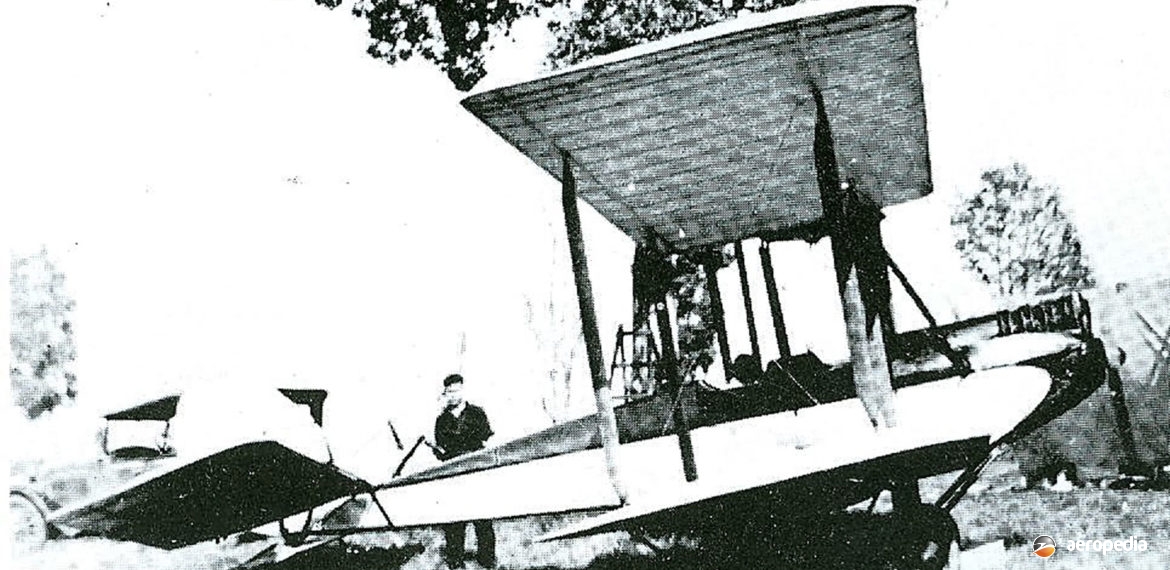Photograph:
A period photograph of the Galway aircraft (Author’s collection)
Country of origin:
Australia
Description:
Light experimental biplane
Power Plant:
One 75 kw (100 hp) de Havilland Gipsy I four-cylinder in-line air-cooled engine
Specifications:
- Wingspan: 13.41 m (44 ft)
- Wing chord: 2.13 m (6 ft 10 in)
- Tailplane span: 5.18 m (17 ft)
- Tailplane chord: 1.52 m (7 ft)
History:
In about 1930 in Western Australia Mr E (Ted) Galway, who described himself as a Canadian, designed and built a biplane with wings which could be pivoted on a spanwise line to permit the incidence to the wing to be varied in flight with the additional and important characteristic that the incidence would vary automatically with the movement of the centre of pressure to maintain the angle of incidence to the airflow as selected by the pilot in cruising flight in still air. The system was designed to maintain the incidence of 2½ degrees, this providing the best lift/drag ratio for the wing section used. It was said he had been working on the project for ten years.
Mr Galways’s aim was to build an aeroplane with variable incidence wings controlled by spring-balanced cables, resulting in the mass of the aircraft being pivoted on its lifting surfaces. He, with a local syndicate, obtained the fuselage of a damaged de Havilland DH.60 Gipsy Moth VH-UKM (c/n 1070) to which he attached his own wing and tailplane. The DH.60 had been damaged in an accident at Goombungie, QLD on 15 January 1931. This fuselage included the engine, undercarriage and instruments. Theoretically the wings automatically adjusted themselves to the best lift/drag ratio according to the conditions prevailing at the time and this was thought to greatly increase efficiency.
Control was provided by limited restriction of movement of the wings and elevators. No ailerons were fitted, it being said control in a bank was achieved by applying a differential in the tension in the incidence control cables between the port and starboard mainplanes with spring loaded cables in the control system catering automatically for gust loads by allowing a change in incidence. The biplane wings were hinged about the front spar root, the rear spars being free floating. The tailplane was designed to provide lift and was pivoted about the leading-edge. It also also designed to vary its incidence automatically and with differential movement as between port and starboard. No rudder was required, although one was provided. Controls were a main control column with a handle-bar with fore and aft movement and rudder pedals.
Initial tests revealed difficulties in balancing the controls and it has been thought when the machine was actually flown on 4 November 1931 the measure of control was insufficient to allow a normal turn, resulting in the nose of the machine dropping, with catastrophic results. It is known Galway was not a licensed pilot and no records have been available of his flying experience.
Noted Australian historian and former RAAF pilot, Keith Meggs, in his research on early Australian aviation, has recorded that Mr Galway, although stated to be a Canadian, was an Australian who spent time in the United States and Canada. The aircraft was assembled at Maylands, WA on 21 June 1931 and Shell Company pilot, Capt Frank Briggs, was engaged to make the first flight. However, it seems there was a disagreement and the machine struck power and telephone wires after becoming airborne prematurely, occasioning some damage.
The machine was repaired but the Civil Aviation Authority (CAA) refused permission for it to fly from Maylands and it was taken to a farm at Wungong, near Armidale, WA. After three more incidents with Mr Galway at the controls it was again repaired. However, the Air Board indicated the machine was not structurally sound and should not be flown. Galway ignored the direction and took the aircraft to a farm near York, WA,where taxiing tests were carried out on 29 October, on a couple of which the aircraft rose from the ground a couple of metres. However, on 4 November Galway flew the aircraft to an altitude of 61 m to 91 m (200 to 300 ft) when it suddenly dived into the ground and he was fatally injured.

